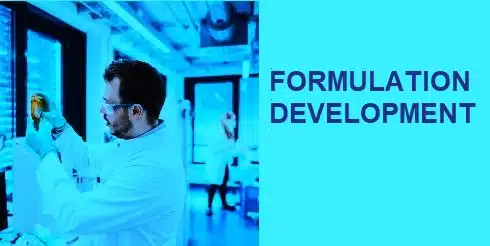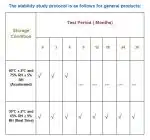This SOP ensures that the formulation development process is conducted systematically and consistently, following best practices and regulatory requirements to ensure the quality and safety of the final drug product.

1. PURPOSE
To describe the procedures for developing pharmaceutical formulations, ensuring consistency, quality, and compliance with regulatory requirements throughout the formulation development process.
2. SCOPE
This SOP is applicable for all activities involved in the development of formulations for drug products, including solid, liquid, semi-solid, and injectable forms, within the Product Development or Research and Development (R&D) department.
3. RESPONSIBILITIES
3.1. Formulation Scientist/officer: Responsible for designing and conducting formulation experiments, documenting data, and ensuring compliance with this SOP.
3.2. R&D Manager: Reviews formulation development plans and reports to ensure alignment with project goals and regulatory requirements.
3.3. Quality Control: Conduct regular quality checks at various stages of formulation development to ensure compliance with specifications.
3.4. Quality Assurance: Ensures that all formulation activities comply with Good Manufacturing Practices (GMP) and other relevant regulations.
4. ACCOUNTABILITY
Head of the concerned Department
5. ASSOCIATED DOCUMENTS
ICH Q8 (R2) – Pharmaceutical Development, ICH Q1A (R2) – Stability Testing of New Drug Substances and Products.
6. PRECAUTIONS
Include guidelines for ensuring the safety of personnel involved in formulation development, such as handling hazardous materials and using appropriate personal protective equipment (PPE). Also, ensure compliance with regulatory and company-specific requirements.
7. PROCEDURE
Outline the step-by-step procedure for formulation development, which may include the following stages:
7.1. Pre-formulation Studies:
7.1.1. Identify and evaluate the physicochemical properties of the active pharmaceutical ingredient (API) and excipients, such as solubility, stability, pH, melting point, and particle size.
7.1.2. Conduct compatibility studies between the API and excipients to identify potential interactions that could affect the stability and efficacy of the formulation.
7.2. Selection of Formulation Type:
7.2.1. Determine the appropriate dosage form based on the API properties, intended route of administration, and therapeutic objectives.
7.2.2 Select excipients based on their functionality (e.g., fillers, binders, disintegrants, lubricants) and compatibility with the API.
7.3. Formulation Design and Development:
7.3.1. Develop prototype formulations by varying the proportions of API and excipients to achieve the desired characteristics (e.g., stability, bioavailability, dissolution rate).
7.3.2. Conduct initial screening tests on prototypes, such as dissolution testing, uniformity, hardness, and stability under different environmental conditions.
7.4. Optimization of Formulation:
7.4.1. Optimize the formulation based on the results of screening tests and further studies to achieve the desired product specifications and quality attributes.
7.4.2. Utilize statistical design of experiments (DOE) to systematically investigate the effects of formulation variables and optimize the formulation.
7.5. Scale-Up and Process Development:
7.5.1. Develop a process for manufacturing the formulation at a larger scale, considering factors such as equipment selection, mixing, granulation, drying, and tablet compression.
7.5.2. Perform scale-up trials to ensure that the formulation maintains its quality and performance characteristics when produced at commercial scale.
7.6. Stability Testing:
7.6.1 Conduct stability studies on the optimized formulation under various environmental conditions (e.g., temperature, humidity, light) to determine its shelf life and establish appropriate storage conditions.
7.6.2. Analyze stability data to identify any degradation products or changes in the formulation that could impact its safety and efficacy.
7.7. Documentation and Reporting:
7.7.1. Document all formulation development activities, including experimental design, data collection, analysis, and results.
7.7.2 Prepare detailed formulation development reports, including rationale for formulation choices, results of studies, and conclusions.
8. ABBREVIATIONS
8.1. SOP: Standard Operating Procedure
8.2. DOE: Design of Experiments
8.3. API: Active Pharmaceutical Ingredients
8.4. PPE: Personal Protective Equipment
8.5. GMP: Good Manufacturing Practices
8.6. R&D: Research & Development
8.7. ICH: International Council for Harmonization
9. ANNEXURES
Nil
Frequently Asked Questions (FAQ)
What is formulation development in the pharmaceutical industry?
Formulation development in the pharmaceutical industry involves creating a stable, effective, and safe dosage form of a drug that delivers the active pharmaceutical ingredient (API) to the patient in a controlled manner. This process includes selecting suitable excipients (inactive ingredients), determining the optimal drug release profile, and designing the final product form, such as tablets, capsules, injectables, or topical preparations. The goal of formulation development is to ensure that the drug is bioavailable, meaning it can be absorbed and utilized by the body as intended, while also being stable and manufacturable on a large scale.
What factors are considered during the formulation development process?
Several factors are considered during the formulation development process, including:
Physicochemical Properties of the API: Understanding the solubility, stability, particle size, and polymorphism of the active pharmaceutical ingredient is essential for selecting suitable excipients and developing an effective formulation.
Route of Administration: The intended route (oral, injectable, topical, etc.) influences the formulation strategy, as different routes require different drug release characteristics and excipient selections.
Patient Population: Factors such as age, weight, and medical condition of the target patient population affect the formulation. For example, pediatric and geriatric patients may require different dosage forms or excipients than adult patients.

Abdus Sobhan Salim is professional experienced pharmacist in pharmaceuticals, author and founder of pharmabossbd.com, the first Bangladeshi pharmaceutical blogger since 2019.



